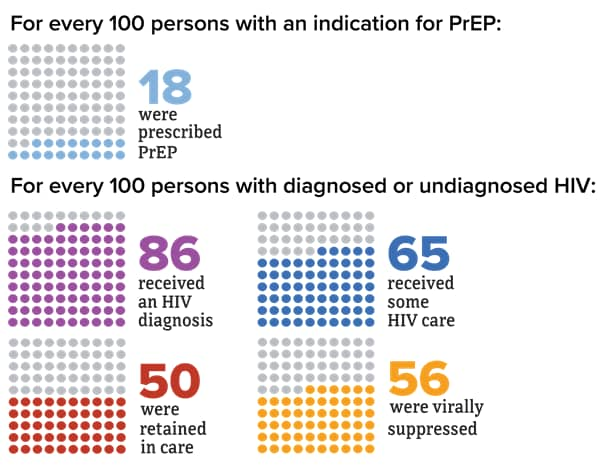Telehealth for HIV Prevention and Care Services
Telehealth is the delivery of healthcare services using telecommunications technology. Telehealth encompasses a broad range of activities, such as direct provision of health services by video or phone, use of text message services for health services, and telementoring models.
About Telehealth for HIV Prevention and Care Services
Although we have the scientific knowledge and tools to end the HIV epidemic, national data on the continuum of HIV care indicate that significant gaps exist in reaching certain populations within the United States with effective HIV care and prevention services. Telehealth can be leveraged to increase access to HIV prevention and care services, to improve their acceptability, and to close these gaps. Telehealth can be used as a strategy to support early HIV diagnosis and initiation of treatment, sustained viral suppression, prevention of new HIV transmissions, and rapid response to HIV outbreaks.
HIV in the United States, 2018

Sources: CDC. HIV in the United States. (December 2020). Retrieved from HIV in the United States (cdc.gov)
HHS. America’s HIV Epidemic Analysis Dashboard (AHEAD). (2020). Retrieved from Data | AHEAD (hiv.gov) on March 15, 2021.
Under Ending the HIV Epidemic in the U.S. (EHE), telehealth is part of the solution to achieve at least a 90% reduction in new HIV infections by 2030. EHE aims to address the disproportionate burden of new infections within certain geographic areas and within certain populations. Telehealth implementation allows for an alternate means to connect persons to HIV care and prevention services who are not being reached through conventional methods. Telehealth can be leveraged as part of each of the four EHE pillars – Diagnose, Treat, Prevent, and Respond.

- HIV self-testing
- Counseling
- Partner services or disease intervention services
- Linkage to care and navigation services
- Case management
- Virtual appointment with an HIV specialist
- Ongoing counseling and support services
- Risk-reduction counseling
- Linkage to care and navigation services for pre- and post-exposure prophylaxis (PrEP and PEP)
- PrEP and PEP virtual appointments with a prescriber
- Delivery of effective behavioral interventions and public health strategies
- Rapid scale up of care and prevention services
- Increase access to prevention services and HIV care in rural areas
- Capacity building of public health workforce
The resources below provide support on implementation of telehealth programs. The telehealth program should be developed with the diverse patient populations in mind.
Implementation and Marketing Materials
The materials and resources listed below support the implementation and/or marketing of Telehealth for HIV Prevention and Care Services by health departments, community-based organizations, and health care or other organizations. The resources are evidence-based and designed for cost-effective, scalable implementation.

